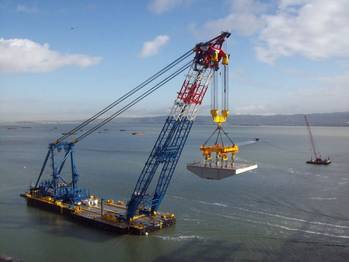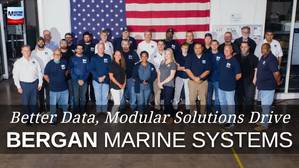The U.S. Navy’s push to fund shipbuilding through its research and development (R&D) budget has paid off.
Because the rules that govern R&D spending are more lenient than those for ordinary procurement, the service was able to begin building a new Littoral Combat Ship (LCS) in October even though the 2006 defense authorization and appropriations bills have yet to pass Congress or be signed by the president.
When the Navy signed a $223 million construction contract with General Dynamics on Oct. 14, congressional budget watchdogs and even some lawmakers wondered whether the service had overstepped its authority by agreeing to buy a ship before it had money in hand to do so.
The Navy action appeared to violate federal funding laws that date as far back as 1861. The service also appeared to disregard a specific prohibition against starting new projects while the government is operating under a temporary funding bill, called a continuing resolution.
But a congressional aide said that several days of researching budget regulations revealed that the Navy is apparently in the right.
First, money allocated for research and development is not as closely tied to specific programs as is money allocated for procurement, the aide explained. That’s because the cost of research and development projects are harder to predict than the cost of established programs due to their experimental nature. To compensate for that uncertainty, the services are given greater latitude to spend R&D money as they see fit.
Thus, the Navy does not need specific authorization to buy an LCS if it is using R&D money for the purchase.
Beyond that, the continuing resolution permits spending at 2005 levels, or if one or both houses have passed their 2006 appropriations bills — which in this case they have — spending is permitted at whichever level is lowest.
The logic here is that when the House and Senate reach a compromise on 2006 appropriations, it will almost certainly be no less than spending of the previous year or the lower of the two 2006 appropriations bills already passed.
In addition, since both House and Senate versions of the 2006 Defense Appropriations Act include money for at least one Littoral Combat Ship in the Navy’s R&D budget, it was fairly safe for the Navy to assume it will receive at least enough R&D money to pay for one ship.
Nonetheless, the Navy’s move spurred congressional budget monitors into action.
“The issue is that final legislation hasn’t passed and the Navy went ahead and issued a contract for a ship,” one legislative specialist said. “This goes directly to Congress’s prerogatives on the power of the purse.”
Research pointed to two antique funding laws. In 1861, Congress passed the Adequacy of Appropriations Act, which prohibits federal agencies from entering into contracts before the contracts have been authorized by law and an appropriation has been approved.
Nine years later, in a crackdown against abuses by federal agencies, Congress passed the Antideficiency Act to prohibit agencies from entering into obligations before receiving appropriations. The act also prohibits incurring obligations that exceed an appropriation.
But a review of more contemporary budgeting regulations showed that Congress now maintains a looser grip on its purse.
Rep. Roscoe Bartlett, R-Md., chairman of the House Armed Services projection forces subcommittee that oversees the Navy, said the continuing resolution “simply allows the Navy to continue doing what they have been doing, and nothing is wrong with that.”
“The bottom line is yes” — the Navy can legally spend 2006 money even though Congress has not yet passed authorizing and appropriating legislation, said Capt. Tom Van Leunen, spokesman for the Navy’s acquisition office.
By WILLIAM MATTHEWS, Defense News
Sponsored Content
Still trying to leverage digital in your operations? Create your own advantage

Pacific Titan Arrives on the U.S. West Coast — Redefining Heavy-Lift Capabilities

October 2025
 Read the Magazine
Read the Magazine

 Read the Magazine
Read the Magazine
This issue sponsored by:

Funding the Flow: America’s Inland Waterways Need a Smarter Investment Strategy
Subscribe for
Maritime Reporter E-News
Maritime Reporter E-News is the maritime industry's largest circulation and most authoritative ENews Service, delivered to your Email five times per week









